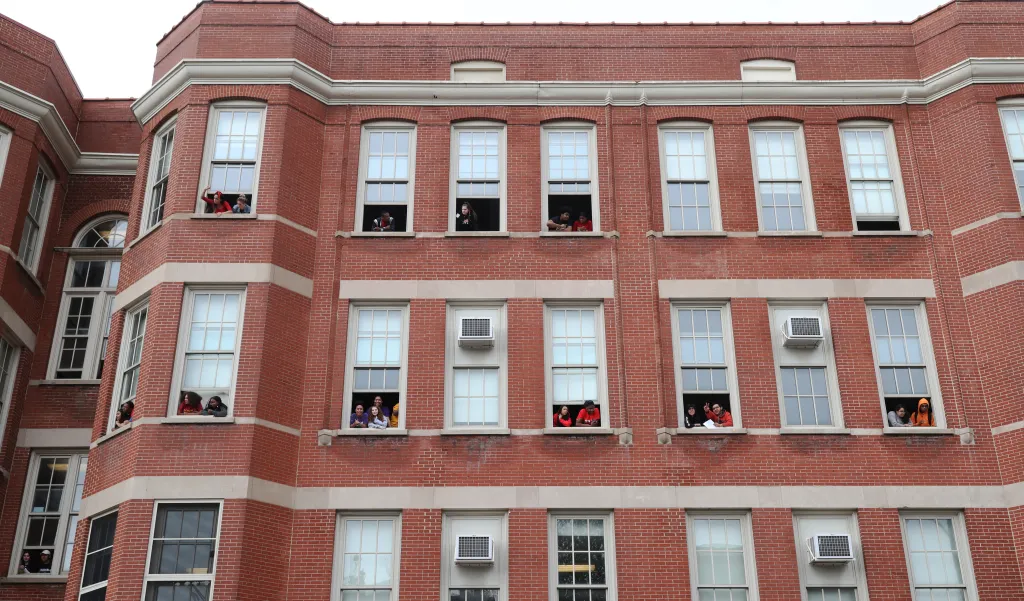
What do Priscilla López, Robert DeNiro and Isaac Mizrahi have in common? They all went to the “Fame” school, also known as the Fiorello H. LaGuardia High School in New York, a highly regarded public school where students can take AP courses and pursue their creative passions. For decades, the New York system has prioritized public, arts-focused schools. Another option for New York kids is the Frank Sinatra School of the Arts High School in Queens, founded and funded in part by Tony and Susan Bennett in the late, great jazz singer’s hometown.
New York is hardly alone in offering pre-professional training: Baltimore School for the Arts, Dreyfoos School of the Arts in West Palm Beach, Florida, and the Duke Ellington School of the Arts in Washington, D.C., all have similar missions. Those are three of numerous examples.
When the Chicago High School for the Arts, widely known as ChiArts, opened its doors in 2009, it was the fulfillment of a long-held goal by many arts lovers in a city known for its cultural prowess. No longer was Chicago the only city with a population of over 1 million without a specialized public arts high school where students did not have to pay tuition. In the following years, Freedom Martin (’19) made it to Julliard, Kyrie Courter (’13) went to Broadway in “Sweeney Todd” and Antoinette “Vi” Freeman (’13) performed with Rihanna in a Super Bowl halftime show. And in a city where many public schools are under-enrolled, ChiArts currently boasts over 500 artistically elite students, committed to getting both a scholarly and an artistic education.
So the news last week that the ChiArts board had voted not to renew its contract with Chicago Public Schools caused understandable levels of distress, especially among parents and students. Initial reporting focused on the high level of student trauma, including a sit-in at the administrative office. Reportedly, the principal, Néstor Corona, left the school on Friday with security attached and without answering questions from the media.
Hardly ideal.
ChiArts is a so-called “contract school,” meaning that it contracts with Chicago Public Schools for its building at 2714 W. Augusta Blvd. but operates quasi-independently. The founding idea was that CPS would cover the cost of the building and the academic instruction (as it would at any public school) while ChiArts, which has an independent board of directors, would then raise philanthropic dollars to cover the arts education portion of the students’ day. Sounds like a good plan: Committed kids get a CPS education embellished by generous, arts-minded donors who know that for some students, pre-professional studies in acting or dance are their ticket to future success.
According to our conversations, the problem here is money. Unsurprisingly.
Payments from CPS have not been covering the full cost of the school building, we’re told, nor the full cost of the academic classes. The ChiArts board’s decision not to renew its contract thus was made to make a more realistic renegotiation possible. The board felt like it could not in good faith renew a contract that would dig the school deeper into a fiscal hole.
Everything at ChiArts, which is heavily unionized, is very expensive and subject to a 129-page agreement with the Chicago Teachers Union that covers not only the academic staff but the artistic and office staff, too, even though the arts side is funded separately. As an example, the starting rate for any part-time arts instructional teacher at ChiArts is $58 an hour, and there is a long list of required additional compensation and strict work rules for academic teachers who do anything extra on the arts side. Experienced teachers make six-figure salaries.
Also relevant here is CTU’s dislike of charter and contract schools. Unsurprisingly, the union criticized the board’s decision, even though the board’s biographies suggest mission-oriented individuals, and many are educators and artists themselves and/or parents of students at the school. For CTU, the board is filled with bad “private” actors, destroying young peoples’ hopes. Board members must have been deeply offended and understandably so.
“Without the charter renewal, 600 families will have their high school dreams called into question,” the union said in a statement. “Our movement’s efforts to expand public school arts programming will be undermined by a private board of directors, and educators and artists who built a thriving arts specialty school face the risk of losing their jobs.”
There is no mention, of course, of the 129-page contract with CTU that governs everything that ChiArts tries to do.
So what to do now? No one questions that the school is highly successful.
The ChiArts board has said it wants CPS to take over the school entirely. That then begs the question of whether CPS can or would be willing to support this kind of model, which the union likely will see as a version of the kind of selective high school it opposes, even as parents fight to get their kids enrolled. Plus, specialty arts education is costly. There is no way around that. And it doesn’t easily fit into a union rule book.
Our view is that this school does not offer “pubic school arts programming” (as important as that is), but rather is designed for pre-professional training in the arts for kids whose artistic talent often exceeds the resources of their families. Most other American cities have recognized that those children need something specific — that they should spend their school days with like-minded peers in an arts-tolerant environment where everyone understands the amount of work needed to succeed in these fields. It would indeed be tragic if the adults in the room cannot work this out and allow ChiArts to continue to thrive.
They should move with urgency. Already there are reports of parents looking into where their artistic kids can go to nurture their talents in the next academic year. Some will look to the suburbs.